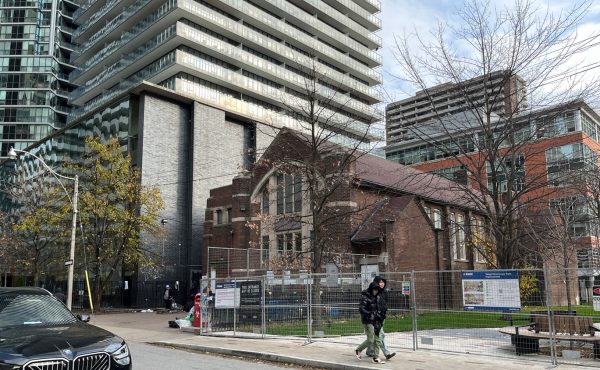Spacing Saturday highlights posts from across Spacing’s blog network in Toronto, Montreal, Ottawa, and the Atlantic region.


![]()
Spacing Ottawa editor Evan Thornton was on the road in Winnipeg this week and reports from that city on the dialogue surrounding the beautifully restored and vibrant Exchange District. During the decades when money was being funnelled into large scale modernist improvement projects the Exchange District was naturally and slowly rejuvenating itself.
On behalf of Montreal artist “Hyperalligina” Spacing is appealing to readers to help find the perfect empty lot in the city for part of an art project to be installed this summer using a grant from the Awesome Ottawa Project. The post includes some more details about what the artist is looking for.
![]()
On the transit file, the weekly Monday Musings column this week generated discussion on how the proposed service cuts to bus routes around Halifax will affect the city. Additionally, Lauren Oostveen delves into the Halifax archives to look at the city’s public transit history.
Spacing Atlantic is launching a photo contest challenging readers to encapsulate their city in a single photograph. Read more about the specific criteria and how to enter.

![]()
What does your choice of favourite buildings say about your personality? Continuing to digest the results from the reader survey of the best of Montreal, Spacing contributor Justin Boulanger speculates about the personal traits of the readers of who selected the top three favourite buildings and laments that the Sci-Fi nerds were not organized enough to get Olympic Stadium onto the podium.
In a landmark public space ruling the Quebec Court of Appeal ruled this week that the City of Montreal’s anti-postering bylaw is unconstitutional. Christopher DeWolf reports on the story of how the law was challenged and speculates what the city will do to accommodate postering in the future. The post also includes a fantastic gallery of posters from around the city.
![]()
As part of the Ideas for Toronto series Adrian Lightstone brings up the issue of using referendums to gauge public support for new revenue tools for transit funding. Citing that referendums having fallen out of style in Canada, Lighstone points out they are frequently used in American cities and other places around the world and have even been used in Toronto.
Mayoral Candidate George Smitherman walked Eglinton Ave all the way across Toronto this week suggesting his interest in urban walkability. Spacing’s Todd Harrison caught with him during part of his walk for a discussion about how he would promote walkability as Mayor and put the discussion on Spacing Radio.
Photo by nondescrip2012


5 comments
What a beautiful picture!
Indeed a nice picture. Curious though which piece it relates too? After reading Michael Hough all morning and the Spacing Montreal piece psycho-analyzing people’s buildings choices, I wonder: was the picture meant to represent an ideal of nature separate and external to the realities of the city?
The photo is strangely irrelevant like scenes of wilderness to the Canadian experience, which is overwhelmingly urban.
I would have put a photo of some street posters because that article from Montreal about the city’s anti-postering bylaw violating the Charter of Rights and Freedoms is definitely relevant to the situation in Toronto. Unregulated postering makes the city look messy but complete bans seem to be out of the question given the ruling in Quebec. We should should consider having something like the Parisian poster kiosks.
I don’t think its right to say that scenes of natural wilderness are irrelevant to the Canadian experience. Canadian culture and style, including that based in the city, is often rooted in idealizations of a northern hinterland such as the picture depicts. Also, don’t forget that cities remain economically dependent on this hinterland (Canada is a commodity based economy). As a picture for Spacing Saturday I always try to find something that is common to all four Spacing readerships.
That said, the poster idea probably would have looked cool too.
We tend to mythologize the northern wilderness but our lives tend to be overwhelmingly spent in cities, where we share experiences that we like. Most Canadians live in the most southern parts of the country.
It’s something that culturally we should acknowledge in our art and culture. Otherwise, it just leaves Canadians turning to American culture or European culture where the urban experience is more prevalent. Of course, our natural beauty is something to be proud of and should influence us but I think it tends to dominate our culture in a way that it becomes detached from the more prevalent Canadian experiences.